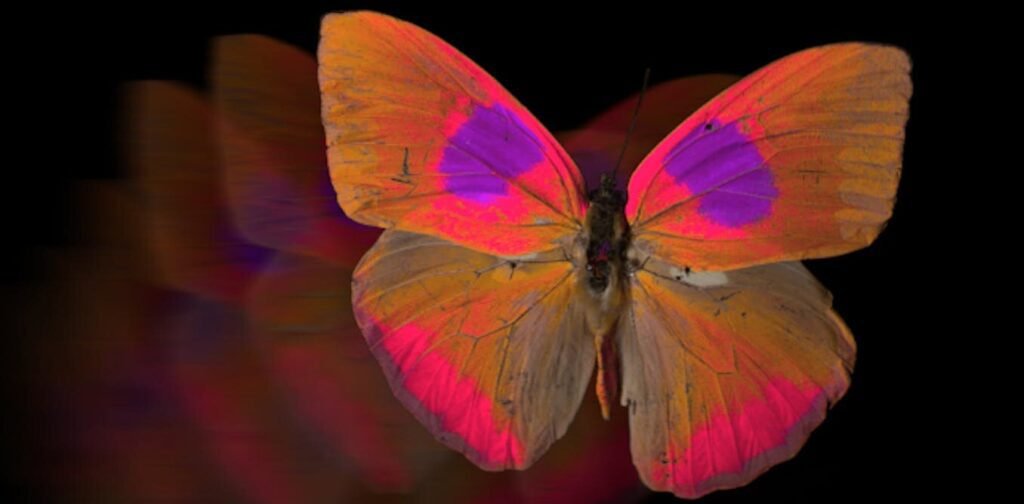× close
Visualizing the colors that birds perceive reveals patterns in ultraviolet light that are normally hidden from us. credit: Vasas et al. (2024) PLOS Biologyprovided by the author
If you’ve ever wished you could see the world through the eyes of another animal, we have good news. We wondered about that too, and as scientists specializing in color vision, we created a solution: a camera system and software package that can record video. Colors from an animal perspective.
Many animals such as bees and birds even mammals Like reindeer and mice, they can sense ultraviolet light. In fact, the lack of UV sensitivity in humans is the exception rather than the rule. At the other end of the visible light spectrum, human eyes have receptors that are sensitive to red, but many animals, such as bees, mice, and dogs, are blind to red as well as to ultraviolet light.
Even though blue and green are colors recognized throughout the animal kingdom, the exact wavelength of light that an animal perceives as “pure blue” or “pure green” varies by species. As a result, no species sees the world in the same color.
Take a look at the sky and understand that its blue color is a joint product of sunlight scattered in the atmosphere and your own sensory system. The colors you see are unique to you. In fact, for many animals, the sky is the color of ultraviolet light.
Then, slowly lower your eyes and try to imagine how the rest of the landscape would look to other species. Our new camera system brings us one step closer to understanding this wonderfully strange world inhabited by other animals.
Capture the world in motion
Although we cannot imagine what ultraviolet light looks like to animals that can detect it, we can visualize it using pseudocolor images. For example, bees that are sensitive to three types of light (ultraviolet, blue, and green) can shift their perceived colors into the human visible range, such that ultraviolet is blue, blue is green, green is red, and so on.
Until now, this process could only be applied to stationary objects. False color photography relies on taking a series of photos through a series of optical filters and then superimposing them. This sequential method means that everything must be in the exact same position in every photo.
This is a significant drawback. This can be a laborious process that limits the number of objects that can realistically be imaged. For example, to take a photo of an iridescent peacock feather from 100 different angles, you would need to screw each filter on and off 100 times.
To make matters worse, all information related to the move will be discarded. However, the living world is always in motion. Trees sway in the wind, leaves flutter, and birds hop along the branches, searching for insects scattered in the undergrowth. I needed a way to visualize all this movement.
The first challenge was to devise a camera that records both ultraviolet and visible light simultaneously. The solution turned out to be a beam splitter. This special optical device reflects ultraviolet light like a mirror and transmits visible light like clear glass.
We installed two cameras (the same kind you can buy in stores or online, nothing too fancy, but one modified to record in ultraviolet light) in a 3D printed case. The modified camera received the reflected UV light and the stock camera received the reflected UV light. Visible light transmitted. The recordings of these two cameras were overlaid and synchronized, and a series of transformation steps allowed us to calculate the amount of light that reached each camera’s sensor.
From this, we can estimate the amount of light that would be captured by the animal’s eyes if it were viewing the scene from the camera’s advantageous position.

